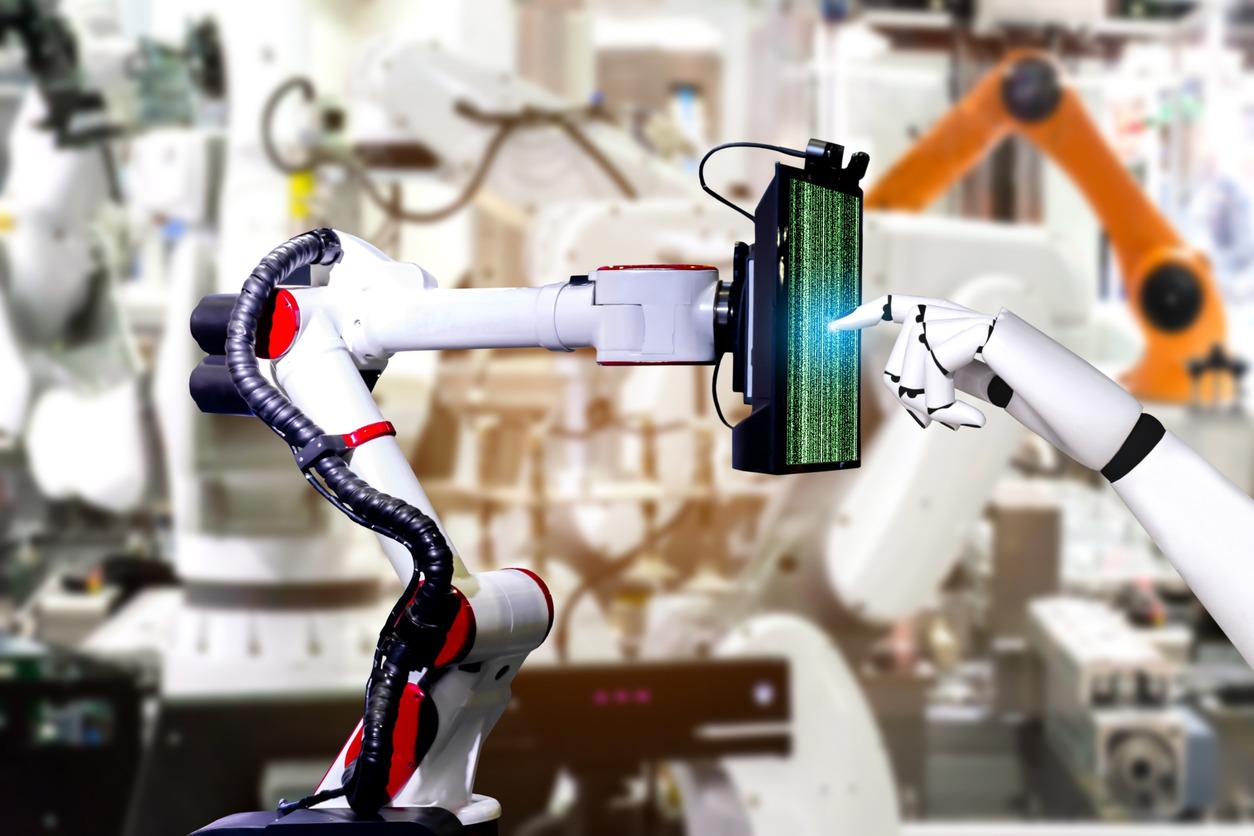ทราบกันดีว่าหุ่นยนต์คือกลไกที่สามารถตั้งโปรแกรมให้เคลื่อนไหวได้หลายระนาบซึ่งมีความอิสระในการทำงานในระดับหนึ่ง ในสภาพแวดล้อมเพื่อปฏิบัติงานตามที่ได้กำหนดไว้ ตลาดหุ่นยนต์ประกอบไปด้วยแขนงต่าง ๆ ที่จัดอยู่ในกลุ่มเทคโนโลยีอัตโนมัติ ตลาดหุ่นยนต์ทั่วโลกโดยรวมในปี 2021 มีมูลค่า 31 พันล้านเหรียญสหรัฐ โดยที่กลุ่มหุ่นยนต์บริการคิดมีส่วนแบ่งในตลาดสูงสุด คิดเป็น 72% ของรายได้ทั่วโลก และเมื่อเปรียบเทียบกับหุ่นยนต์อุตสาหกรรมแล้ว หุ่นยนต์บริการเติบโตเร็วกว่า ส่วนหนึ่งก็เนื่องมาจากภาวะขาดแคลนพนักงานที่เกิดขึ้นในภาวะล็อกดาวน์จากการระบาดของโควิด-19


เมื่อพิจารณาตลาดหุ่นยนต์ พบว่าลักษณะการประยุกต์ใช้งานและแบรนด์ที่หลากหลาย และยังพบอีกว่า ทั้งผู้เล่นตัวจริงบางราย และบริษัทขนาดใหญ่ที่มีผลิตภัณฑ์และบริการหลากหลายเหล่านี้ เป็นผู้ที่มีบทบาทสำคัญในการกำหนดทิศทางของตลาดหุ่นยนต์ ตามรายงานของ Robotics Worldwide ของ Statista คาดว่าตลาดหุ่นยนต์จะสร้างกำไรสูงถึง 34.94 พันล้านเหรียญสหรัฐในปี 2023 ส่วนตลาดที่ใหญ่ที่สุดคือตลาดของหุ่นยนต์บริการ โดยคาดว่าจะมีมูลค่าตลาด 26.29 พันล้านเหรียญสหรัฐในปี 2023 ด้วยอัตราการเติบโตต่อปีที่ 5.52% ที่ CAGR 2023 – 2027 และเมื่อเปรียบเทียบในระดับประเทศแล้ว พบว่าตลาดหุ่นยนต์ในประเทศสหรัฐอเมริกาจะสร้างเม็ดเงินได้สูงสุดที่ 7,260 พันล้านเหรียญสหรัฐภายในปี 2023

การเติบโตของตลาดหุ่นยนต์นั้นได้รับแรงขับเคลื่อนจากเทรนด์ต่าง ๆ เช่น อินเทอร์เน็ตสำหรับทุกสิ่งในอุตสาหกรรม หุ่นยนต์เคลื่อนที่อัตโนมัติ หุ่นยนต์ทำงานร่วมกัน และซอฟต์แวร์โอเพ่นซอร์ส นอกจากนี้ยังมีเทคโนโลยีที่กำลังมาแรง เช่น 5G, Edge Computing และการเคลื่อนที่แบบอัจฉริยะ เทคโนโลยีเหล่านี้ล้วนมีอิทธิพลต่อตลาดทั้ง โดยเฉพาะเทคโนโลยีปัญญาประดิษฐ์ (AI) ที่เสริมสร้างพลักดันให้เกิดนวัตกรรมด้านระบบอัตโนมัติ ทั้งนี้เทคโนโลยี AI ในหุ่นยนต์ได้ทวีความซับซ้อน อีกทั้งหุ่นยนต์ที่สามารถเรียนรู้ด้วยตนเองก็กำลังเป็นที่นิยมเพิ่มขึ้น ยิ่งไปกว่านั้นก็คือเป็นไปได้ที่กระบวนการรวบรวมและวิเคราะห์ข้อมูลจากกระบวนการอัตโนมัติที่ชาญฉลาด จะสามารถช่วยการตัดสินใจของผู้ผลิตและผู้ให้บริการโดยที่การตัดสินใจนั้นอยู่ฐานของข้อมูลและข้อเท็จจริงเพื่อยกระดับกระบวนการทำงานให้ดียิ่งขึ้น

อุตสาหกรรมหุ่นยนต์เป็นอุตสาหกรรมมีผู้เล่นหนาแน่น โดยมากกว่า 500 บริษัทผู้ผลิตสินค้าออกสู่ตลาด จากรายงาน Robotics Outlook 2030 ของ BCG ได้แบ่งหุ่นยนต์ออกเป็น 4 ประเภท ได้แก่ 1) หุ่นยนต์และโคบอทอุตสาหกรรมทั่วไป 2) หุ่นยนต์บริการระดับมืออาชีพแบบประจำที่ – บริการทางการแพทย์และการเกษตร 3) หุ่นยนต์บริการระดับมืออาชีพเคลื่อนที่ – การทำความสะอาดแบบมืออาชีพ 4) หุ่นยนต์เพื่อการก่อสร้างและกิจกรรมใต้น้ำ และ 4) ยานพาหนะนำทางอัตโนมัติ (AGV) สำหรับการขนส่งสินค้าขนาดใหญ่และขนาดเล็กในสายงานโลจิสติกส์หรือสายการประกอบ

จากข้อมูลของ BCG ชี้ให้เห็นว่าหุ่นยนต์บริการระดับมืออาชีพจะครองส่วนแบ่งการตลาดมากที่สุด ปัจจุบันหุ่นยนต์บริการระดับมืออาชีพจะมียอดขายที่สูงกว่าหุ่นยนต์ทั่วไปและหุ่นยนต์ขนส่งถึง 2 เท่า คาดการณ์ว่าจะทำให้ตลาดหุ่นยนต์ทั่วโลกเพิ่มขึ้นจาก 25 พันล้านเหรียญสหรัฐในปีนี้เป็น 260 พันล้านเหรียญสหรัฐภายในปี 2573 โดยมีส่วนแบ่งตลาดสำหรับหุ่นยนต์บริการระดับมืออาชีพสูงถึง 170 พันล้านเหรียญสหรัฐ และยอดขายหุ่นยนต์อุตสาหกรรมและโลจิสติกส์อยู่ที่ประมาณ 80 พันล้านเหรียญสหรัฐ
โควิด-19 ทำให้บางธุรกิจอุตสาหกรรมประสบปัญหากับแรงงานที่ขาดหายไป การใช้หุ่นยนต์จึงเป็นทางออกหนึ่งเพื่อจัดการกับปัญหาการทดแทนแรงงานหรือช่วยแบ่งเบาแรงงานที่มีอยู่ได้ในระดับหนึ่ง ตัวอย่างเช่นงานค้าปลีกหรืองานต้อนรับที่เผชิญภาวะขาดแคลนพนักงาน การลดความซับซ้อนของหุ่นยนต์ก็เป็นอีกเทรนด์ที่ขับเคลื่อนตลาดหุ่นยนต์ เมื่อการติดตั้งใช้งานหุ่นยนต์ลดความซับซ้อนลงแล้ว หุ่นยนต์จะนำมาใช้งานมากขึ้นในอุตสาหกรรมที่ยังไม่เคยใช้งานหุ่นยนต์มาก่อน ขณะนี้ผู้ผลิตหุ่นยนต์พยายามทำให้ผลิตภัณฑ์ของตัวเองใช้งานได้ง่ายขึ้นโดยการสร้างผลิตภัณฑ์ในรูปแบบ solution ครบวงจร เป็นชุดฮาร์ดแวร์ที่มาพร้อมโซลูชันซอฟต์แวร์ ซึ่งอำนวยความสะดวกในการติดตั้งแบบอัตโนมัติที่ไม่ซับซ้อน
Article by: Asst. Prof. Suwan Juntiwasarakij, Ph.D., Senior Editor & MEGA Tech












